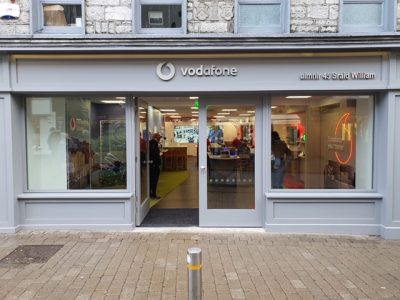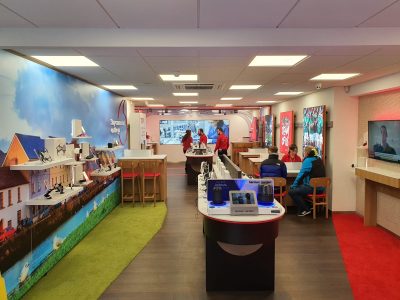Innovate Your Business Model!

With retailers today facing huge challenges within their traditional business model, it’s essential for them to innovate how they deliver goods to customers. Society will be forced to make design and purchase choices through virtual methods much more. This will revolutionize retail space design and social interaction. So, how can retailers compete in this situation? Well, one way is to innovate the store experience itself as the need for physical spaces is ever-present. Design will play an integral role in creating spaces that not only fulfil their function but prioritize and enhance physical and mental health. Both the short-term needs for physical distancing and sanitization and the long term call for permanent change in the way we experience our spaces, call for drastic diversification in the way designers think. In the short term, spaces may need to become more flexible, providing as many opportunities for community interaction while maintaining physical distancing as well as integrating technology. In the long term, spaces will have to adapt to either their extended use (as in the case of homes) or their brief use, flexibly adapting to evolving needs.
Design in the future must also take into consideration behaviour analysis to improve spaces, adapt sanitization technology to quickly improve hygiene in high traffic areas, improve building systems such as air purification and ventilation, integrate artificial intelligence to customize the commercial experience, automate the supply chain as much as possible as well as certain client interactions to encourage physical distancing.
We expect many changes in architectural and interior design, such as the increased use of spaces that adapt to the needs of the clientele and the business or the reduction of spaces for traditional retail, turning to “resimercial” design and creating more comfortable home-like stores to encourage clients to spend more time in the space. Micro mobility, decentralization of commercial spaces and introduction of spaces to facilitate ecommerce and delivery systems could help in reducing the amount of people, while special areas or even stores could be dedicated to “high risk” people like the elderly or immunosuppressed people. Increased interest in nature and the outdoors should also encourage strong design connection to the outdoors.
In parallel, higher precautions will be necessary, such as monitoring physical distancing throughout the store: and again, design and technology will help. Pininfarina (Car Designers), for example, offer a solution that integrates physical and digital design, technology and services to analyse people flows and so make it possible to verify and monitor the application of anti-COVID-19 measures in all indoor and outdoor settings, so including dealerships, shops and large-scale retailers.
The pandemic has also accelerated a trend that comes from the luxury world and that was already in place in the pre-COVID era: the customer journey can start online and end in the store, or vice versa. A journey designed to start before the first visit to the showroom and to continue after sales in a consistent and seamless path. In apparel and fashion, for example, one of the main impediments to online purchasing has historically been the inability for customers to see how items would look on them. Some jewellery brands are working around the problem by launching platforms that use augmented reality (AR), machine-learning, and computer-vision techniques allowing shoppers to preview styles as they move, enjoying the experience of a retail setting in the comfort of their home. However, the experience in the store continues to be recognized by experts as a central part of the entire journey. A brand flagship store becomes a social space where we can meet and entertain ourselves with the local communities. Experience is the keyword—the creation of an immersive world in which the digital touchpoints are integrated with the tri-dimensional features of the environment and of the products. We can imagine retail spaces where the building becomes “alive” and literally “talks” to customers, suggesting the safest way to move around a building to avoid the fear of confronting other shoppers by using lighting and “live walls” to guide them.
The key challenge is to transform today’s retail network into a digital, profitable and modern sales channel that combines the opportunities of the online world with the strengths of the traditional retail channel. Data is all around us, and every action we take generates more data. Retailers can easily tap into this wealth of information and make informed and well-designed experiences that not only revive but revolutionize the industry.
We, as a designer of physical presence, are ready to guide the most important changes retailers should embrace today. We have realized iconic flagship stores like the Vodafone experience store in Galway, designed to extend the brand experience while increasing the reach, traffic and sales. We believe that in an increasingly saturated market, brands should create seamless user experiences and unified brand impressions that define, inspire and engage consumers.
And designers, who know how to shape the future, are here to help them achieve this goal adapting it to the needs of the New Normal.


